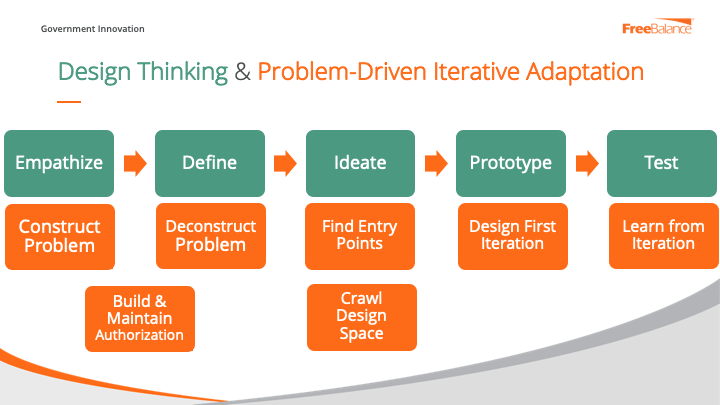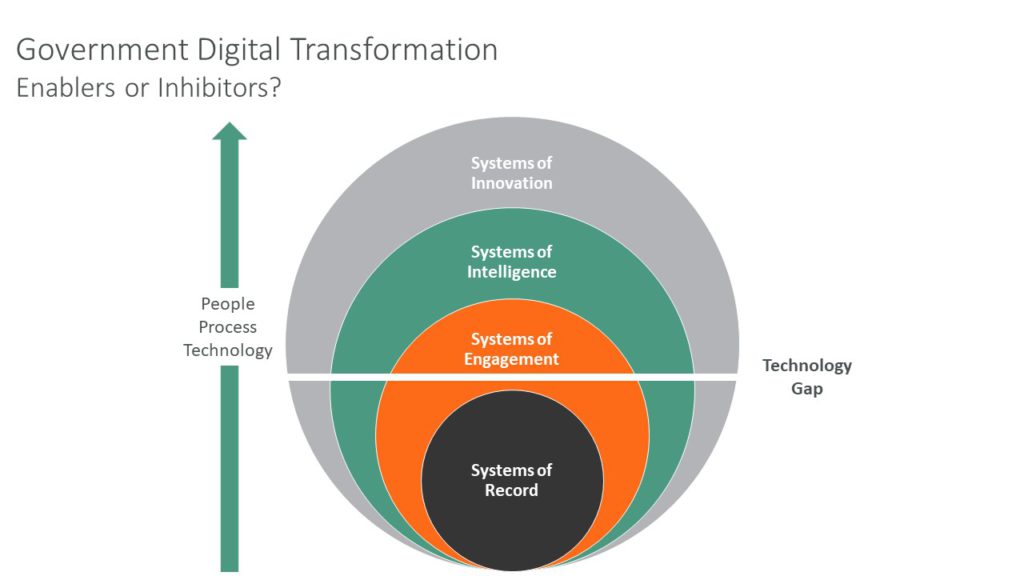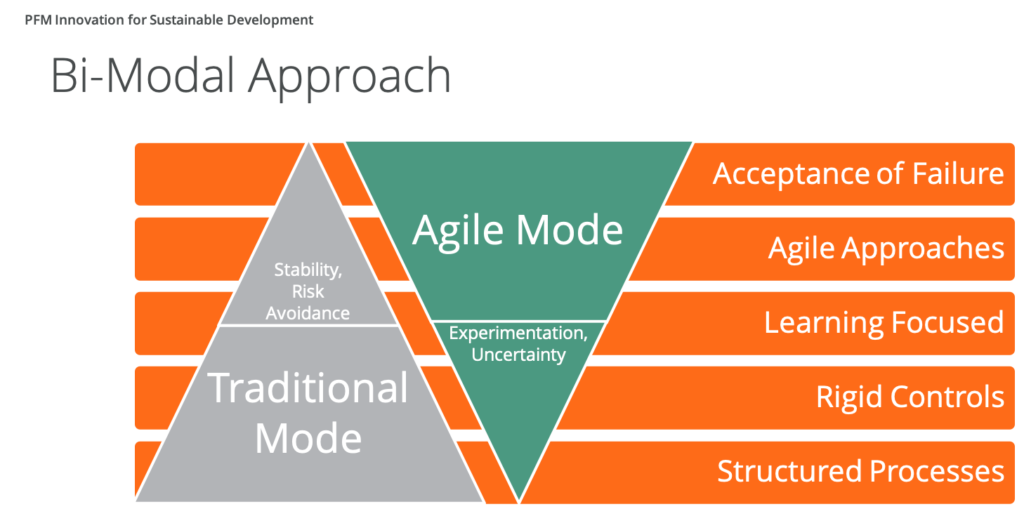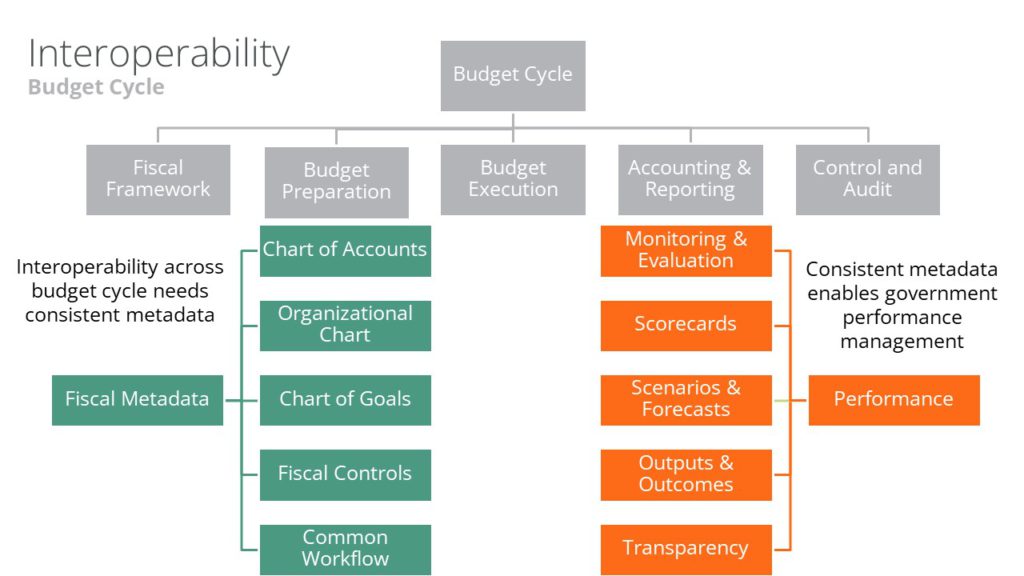Processes For Effective Government Digital Transformation
FreeBalance was fortunate to provide insights into government digital transformation at the recent Tech Hub Islands Summit at which three important questions were considered. Our views on each can be found in this three part blog series:
- Government Digital Transformation and Inclusive Growth
- How to Get Government Digital Transformation Right
- Change Management for Government Digital Transformation
This post looks at concerns related to the process of transformation that were raised at the Summit:
- Modernization vs innovation
- The role of IT teams in digital transformation
- Data silos in the public sector
- Security vs privacy
Modernization or Innovation – Which is Most Important to a Successful Government Digital Transformation?
Should governments focus on digital transformation that is driven by the need for modernization? Or transformation that is driven by the need for innovation? Or, is there a healthy balance between the two?
When government digital transformation is done right, modernization is innovation and innovation is modernization. Transformation requires the disassembling of processes, learning from users, design thinking, and positive deviances to fully understand the problems that need to be overcome. Problem-Driven Iterative Adaptation (PDIA), for example, supports country development by focusing on problems rather than solutions. Transformation techniques like agile, design thinking and PDIA are also innovation processes.

Digital transformation is not about adopting social, mobile, analytics or cloud technologies and hoping that modernization will somehow occur. Many government digital transformation projects are not built on an effective foundation. It is difficult to provide decision support, fiscal transparency, eProcurement, citizen and business engagement when underlying systems of record do not have interoperability, have different metadata and present multiple versions of the ‘truth’.

Given that both modernization and innovation are important elements of a successful digital transformation, governments should use a methodology such as the FreeBalance A-i3+qM approach to unpack not only what is required, but also to surface the best solutions.
A-i3+qM™ leverages agile techniques using reference models aided by visual communications through demonstrations, workshops, storyboards, prototypes and proofs-of-concept to deliver working Government Resource Planning software within six months.

What is IT’s Role in Achieving Digital Transformation Goals?
Many observers see IT as central to digital transformation yet transformation can only be achieved if all government Ministries, Departments, and Agencies (MDAs) successfully implement and embrace the changes. IT departments are also often risk averse, seeing perceived dangers in new technology adoption, and unproven experimentation. This often causes so-called “shadow IT“.
The best way forward is for the government to create a digital services group that advocates experimentation and supports a bimodal approach. The bimodal model includes a traditional approach to the control and management of critical functions such as data centres, networks, cybersecurity and back-office systems while enabling experimentation with new technology, often using commercial cloud infrastructures.

How to Break Down Data Silos in the Public Sector for Effective Digital Transformation
Data silos in the public sector are not so much about IT silos as structural silos within governments and digital transformation is not a silver bullet the magically cures the problem. There is always internal resistance to integration and interoperability among systems. Furthermore, some of these silos are enshrined in legislation. Yet full interoperability across the government budget cycle is the foundation for the evolution from systems to record to systems of engagement and intelligence.
Governments are often burdened with information system silos that use different underlying technologies. It is often difficult to leverage these systems as part of an Enterprise Service Bus (ESB). This often means temporarily leveraging poorer integration practices like stored procedures, flat files and direct database calls in order to achieve integration. Metadata management and Extraction, Transformation and Load (ETL) tools can be leveraged.

Within an integrated GRP solution such as the FreeBalance Accountability Suite™, government has both fiscal metadata interoperability required for open data transparency (system of engagement) and performance metadata interoperability needed for decision-making (system of intelligence).

Privacy vs Security
Can a government balance its security and privacy needs in its digital transformation while creating flexible, scalable digital capabilities? Enterprise architecture often represents a compromise between performance and security with encryption and other cybersecurity methods reducing system performance.
There are numerous modern ways to optimize security and scalability through encryption and zero-trust systems on one hand, and scalable microservices with load balancing on the other hand. Commercial public cloud services tend to be more secure than government data centres while providing more elasticity for performance during peak periods. Of course, the use of public cloud services is not allowed in many countries and data sovereignty issues are very important for governments.
Governments often test new software releases, and experiment on public cloud infrastructures in order to reduce data centre burdens. Non-critical and non-personal data could also be exposed on public cloud infrastructures such as the use of transparency portals.
A significant area of concern is the exposure of legacy back-office systems for citizen engagement when these systems are neither scalable or secure.

FreeBalance’s advisory services provide public sector consulting on government digital transformation and Public Financial Management. Get in touch today to find out more.